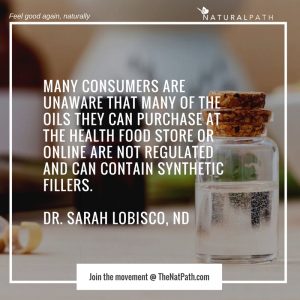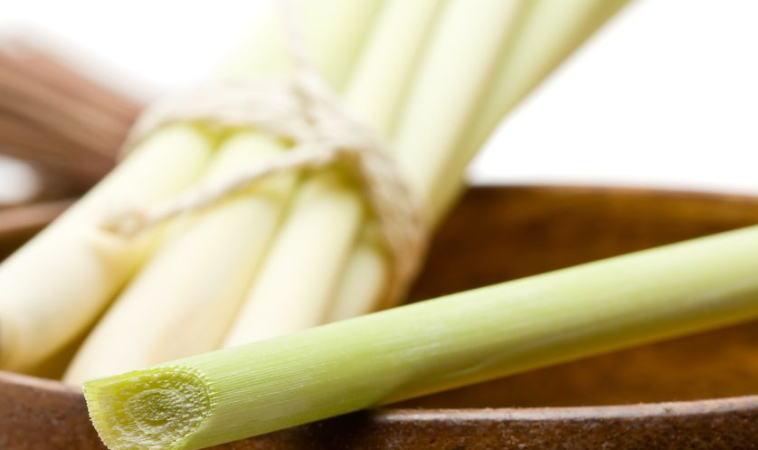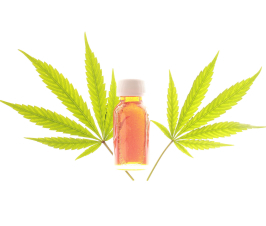‘Tis the Season to Learn to Love Lemongrass Essential Oil! Part (Paw) III
 In Part II of my lemongrass essential oil article, I provided information on how lemongrass essential oil was safe to use in man and beast. I also discussed some of its applications including its microbe and fungal inhibiting properties and modulation of inflammation.
In Part II of my lemongrass essential oil article, I provided information on how lemongrass essential oil was safe to use in man and beast. I also discussed some of its applications including its microbe and fungal inhibiting properties and modulation of inflammation.
The first part of my lemongrass oil article briefly reviews the biochemical makeup of lemongrass, including: its active constituents, the fact that different species of lemongrass have different levels of predominant compounds, and constituents can vary based on production and manufacturing. Furthermore, I point out how and where the plant of the same species is grown and produced will also determine what molecules the plant produces and its resultant actions (termed chemotype, which I explain in this post on rosemary essential oil).
In the following study excerpts (bold emphasis mine), the authors describe the differences in chemical composition of species of lemongrass essential oils and how the molecular content determines the quality of the essential oils. This is important for me to go more in depth about, as many consumers are unaware that many of the oils they can purchase at the health food store or online are not regulated and can contain synthetic fillers. Furthermore, the use of the word “pure,” “organic,” or “natural” does not ensure the therapeutic constituents are present.
For example, here’s an excerpt on how the drying method of lemongrass essential oil leaves (sun, air, or oven drying) produced different chemical contents of the oil:
Comparison of the yield and composition of the essential oils showed differences in the chemical contents of leaves dried by the different methods; air-dried leaves yielded the most essential oil (0.30 %) compared to other drying methodswhich gave approximately the same essential oil percentage yields; sun-dried (0.16%), oven-dried (0.16%) and fresh plant (0.16 %). Sesquitepenoids dominate the oils (81.25%-90.30%).Citral, the major component in the fresh plant oil (33.68%), was also identified as the most prominent compound in the air and oven dried oil but occurred in low content, 8.25% and 8.82%), it was observed that only 5 out of the 21 compounds identified were present in all the four oils. Some compounds such as farnesene, farnesol,farnesalandcaryophlleneoxide absent or in trace amounts in the fresh oil emerged in the dried leaf oils. The drying methods show significant effect on the chemical content of lemongrass oil and this may be ascribed to chemical transformation of the various components.1
In another article, which identified 23 compounds of lemongrass oil (90.6% of the total oil), the authors found the major components to be: “geranial (42.2%), neral (31.5%), and β-myrcene (7.5%). Geranyl acetate (4.3%) and isopulegol (1.4%) were minor but significant components (Table 1). The quality of lemon grass is generally determined by its citral content.”2
Therefore, lemongrass essential oil extracted by steam distillation may be classified as a “citral chemotype.”2 Furthermore, plant location, even if they are grown “organic,” effected constituents, the authors continue:
Comparing the chemical constituents of this LGEO with the published data (15−17), its composition seems to be similar to that of Indian oils, with the same content of neral and geranial, whereas the African oils contain high levels of myrcene. Bhattacharya et al. (22) published the chemical composition of EO extracted from several species of lemon grass (Cymbopogon flexuosus, C. pendulus, C. pendulus). The quantity of neral was similar among the species analyzed (33−36%), whereas the amount of geranial varied from 45.0 to 54.5%.2
Finally, the authors touched on this very important consideration for consumers- how cosmetics and chemical industries can use “clone” oils of lemongrass oil high in the constituent myrcene, not the active component, citral. Furthermore, they list other factors effecting chemical composition:
Plant clones especially rich in citral have been developed for the cosmetics and chemical industries. According to Akhila (8), there are two types or clones of this aromatic herb species on the basis of the relative composition of the EO − the East Indian type with high amounts of myrcene (38%) and low citral (≈7%), and the West Indian type with little or no myrcene (0–12%) and a high citral content (up to 86%). Such differences in the chemical composition have been attributed to a range of factors, including geographical location, climatic conditions, time of harvest, age of the plant, and the method of distillation (14).2
Why Quality and Chemotype is Important for Patients
Besides consumer protection, when treating candida, the constituent citral and lemongrass were both found to be antifungal.3 This could mean a “cheaper” cosmetic oil, low in citral, may not produce the same effects. One 2008 article states:
Superficial mycoses of the skin are among the most common dermatological infections, and causative organisms include dermatophytic, yeasts, and non-dermatophytic filamentous fungi. The treatment is limited, for many reasons, and new drugs are necessary. Numerous essential oils have been tested for both in vitro and in vivo antifungal activity and some pose much potential as antifungal agents. By using disk diffusion assay, we evaluated the antifungal activity of lemongrass oil and citral against yeasts of Candida species (Candida albicans, C. glabrata, C. krusei, C. parapsilosis and C. tropicalis). This study showed that lemongrass oil and citral have a potent in vitro activity against Candida spp.3
Furthermore, because there is no oversite, there’s nothing to stop manufacturers from adding in synthetic compounds that could produce toxic effects.. You can learn more considerations about quality and why it counts here, here, and here.
Other Actions of Lemongrass
Now that you know the importance of using the right type of lemongrass essential oil, below is a brief overview of some of the studies. Most are testing using Cymbopogon citratus.
- Antioxidant and Easing Discomfort – lemongrass oil was found to have antioxidant properties and reduce pain behavior in rodents.4
- Supporting Healthy Cholesterol Levels Safely –in testing Swiss male mice to determine toxic doses and effects of lemongrass oil, the researchers found no damaging effects in gross pathology, body weight, histology, urinalysis, or blood chemistry relative to controls.5 However, they did note:
Additionally, blood cholesterol was reduced after EO-treatment at the highest dose tested. Similarly, data from the comet assay in peripheral blood cells showed no genotoxic effect from the EO. In conclusion, our findings verified the safety of lemongrass intake at the doses used in folk medicine and indicated the beneficial effect of reducing the blood cholesterol level.
- Mood Balancing and Calming-researchers tested the anxiolytic-like activity of lemongrass essential oil using light/dark box (LDB) and marble-burying test (MBT) and antidepressant activity using forced swimming test (FST) in mice. The authors compared the results to a competitive benzodiazepine binding antagonist drug (Flumazenil) and 5-H1(1A) receptor antagonist drug (WAY100635). These medications are used for their anti-anxiety and antidepressant effects, respectfully. The authors were able to determine the calming effects of the oil at the GABA(A) receptor-benzodiazepine complex. Furthermore, lemongrass essential oil demonstrated a synergistic effect at ineffective doses of diazepam. Neurotransmitter levels were not altered in certain areas of the rats’ brains.6 The authors concluded:
Theresults corroborate the use of Cymbopogon citratus in folk medicine and suggest that the anxiolytic-like effect of its EO is mediated by the GABA(A) receptor-benzodiazepine complex.6
- Food Preservation and Microbial Inhibition-lemongrass essential oil has been used in food presentation against microbes, making it helpful for food safety.7 Furthermore, its power against strong infectious agents has been validated in in vitro. One study showed it may help prevent resistance by reducing the amount of formation of Staphylococcus aureus biofilms.8 Finally, one study that tested multiple essential oils, including lemongrass, against antibiotic-resistant microbes and stated, “Remarkably, almost all tested oils demonstrated efficacy against hospital-acquired isolates and reference strains, whereas Olive and Paraffin oil from the control group produced no inhibition. As proven in vitro, essential oils represent a cheap and effective antiseptic topical treatment option even for antibiotic-resistant strains as MRSA and antimycotic-resistant Candida species.”9
- May Be Effective in Preventing “Human Landing” of Mosquitoes-one study that tested various products utilizing clip-on diffusers, found a combination using lemongrass oil provides superior protection in a semi-field setting in Israel after the release of 1500 mosquitoes. There were two different kinds of mosquitoes on consecutive nights. That’s a lot of creepy crawlers!10
- Digestion-one study found lemongrass essential oil protected against stomach lining injury induced by alcohol and aspirin in rodents, dose-dependently.11
Smart Oil Tip
A good quality lemongrass essential oil will stain!! Therefore, be aware that your toes and feetsies can temporarily turn yellow during treatment. It does go away, but you may want to use a carrier oil to minimize the effect when applying 1-2 drops of QUALITY oil directly on location.
If you are an essential oil expert or have an essential oil whiz-of-a-doctor, you can consider internal use, cautiously, of lemongrass oil.
I hope you enjoyed my series on lemongrass essential oil!
Make sure you visit my essential oils database to learn more about essential oils.
References:
- The essential oil components of Cymbopogon citratus(Lemongrass) from South-West Nigeria: A study of the effect of drying methods. 47th International Symposium on Essential Oils (ISEO2016). Book of Abstracts. September 11-14, 2016. Nice, France. (pg 51) http://unice.fr/colloques/iseo/documents/ISEO2016%20Book%20of%20abstracts.pdf
- Boukhatem MN, Ferhat MA, Kameli A, Saidi F, Kebir HT. Lemon grass (Cymbopogon citratus) essential oil as a potent anti-inflammatory and antifungal drugs. The Libyan Journal of Medicine. 2014;9:10.3402/ljm.v9.25431. doi:10.3402/ljm.v9.25431.
- Antifungal activity of the lemongrass oil and citral against Candida sp. Braz J Infect Dis. 2008 Feb;12(1):63-6.
- Lucindo Quintans-Júnior, Ricardo Fagundes da Rocha, Fernanda Freitas Caregnato, et al. Antinociceptive action and redox properties of citronellal, an essential oil present in lemongrass. J Med Food. 2011 Jun;14(6):630-9. doi: 10.1089/jmf.2010.0125.
- Costa CA, Bidinotto LT, Takahira RK, Salvadori DM, Barbisan LF, Costa M. Cholesterol reduction and lack of genotoxic or toxic effects in mice after repeated 21-day oral intake of lemongrass (Cymbopogon citratus) essential oil. Food Chem Toxicol. 2011 Sep;49(9):2268-72. doi: 10.1016/j.fct.2011.06.025.
- Costa CA, Kohn DO, de Lima VM, Gargano AC, Flório JC, Costa M. The GABAergic system contributes to the anxiolytic-like effect of essential oil from Cymbopogon citratus (lemongrass). J Ethnopharmacol.2011 Sep 1;137(1):828-36. doi: 10.1016/j.jep.2011.07.003.
- Ekpenyong CE, Akpan EE. Use of Cymbopogon Citratus Essential Oil in Food Preservation: Recent Advances and Future Perspectives.Crit Rev Food Sci Nutr. 2015 Jul 6:0.
- Vázquez-Sánchez D, Cabo ML, Rodríguez-Herrera JJ. Antimicrobial activity of essential oils against Staphylococcus aureus biofilms. Food Sci Technol Int. 2015 Dec;21(8):559-70. doi: 10.1177/1082013214553996.
- Warnke PH, Becker ST, Podschun R, Sivananthan S, et al. The battle against multi-resistant strains: Renaissance of antimicrobial essential oils as a promising force to fight hospital-acquired infections. J Craniomaxillofac Surg. 2009 Oct;37(7):392-7. doi: 10.1016/j.jcms.2009.03.017.
- Evaluation of commercial products for personal protection against mosquitoes. Acta Trop. 2013 Feb;125(2):226-30. doi: 10.1016/j.actatropica.2012.10.009. Epub 2012 Oct 22. https://www.ncbi.nlm.nih.gov/pubmed/23092689
- Fernandes C, De Souza H, De Oliveria G, Costa J, Kerntopf M, Campos A. Investigation of the Mechanisms Underlying the Gastroprotective Effect of Cymbopogon Citratus Essential Oil. Journal of Young Pharmacists : JYP. 2012;4(1):28-32. doi:10.4103/0975-1483.93578.
 Sarah LoBisco, ND, is a graduate of the University of Bridgeport’s College of Naturopathic Medicine (UBCNM). She is licensed in Vermont as a naturopathic doctor and holds a Bachelor of Psychology from State University of New York at Geneseo. Dr. LoBisco is a speaker on integrative health, has several publications, and has earned her certification in functional medicine. Dr. LoBisco currently incorporates her training as a naturopathic doctor and functional medicine practitioner through writing, researching, private practice, and through her independent contracting work for companies regarding supplements, nutraceuticals, essential oils, and medical foods. Dr. LoBisco also enjoys continuing to educate and empower her readers through her blogs and social media. Her recent blog can be found at www.dr-lobisco.com.
Sarah LoBisco, ND, is a graduate of the University of Bridgeport’s College of Naturopathic Medicine (UBCNM). She is licensed in Vermont as a naturopathic doctor and holds a Bachelor of Psychology from State University of New York at Geneseo. Dr. LoBisco is a speaker on integrative health, has several publications, and has earned her certification in functional medicine. Dr. LoBisco currently incorporates her training as a naturopathic doctor and functional medicine practitioner through writing, researching, private practice, and through her independent contracting work for companies regarding supplements, nutraceuticals, essential oils, and medical foods. Dr. LoBisco also enjoys continuing to educate and empower her readers through her blogs and social media. Her recent blog can be found at www.dr-lobisco.com.


















Great read. Thanks!